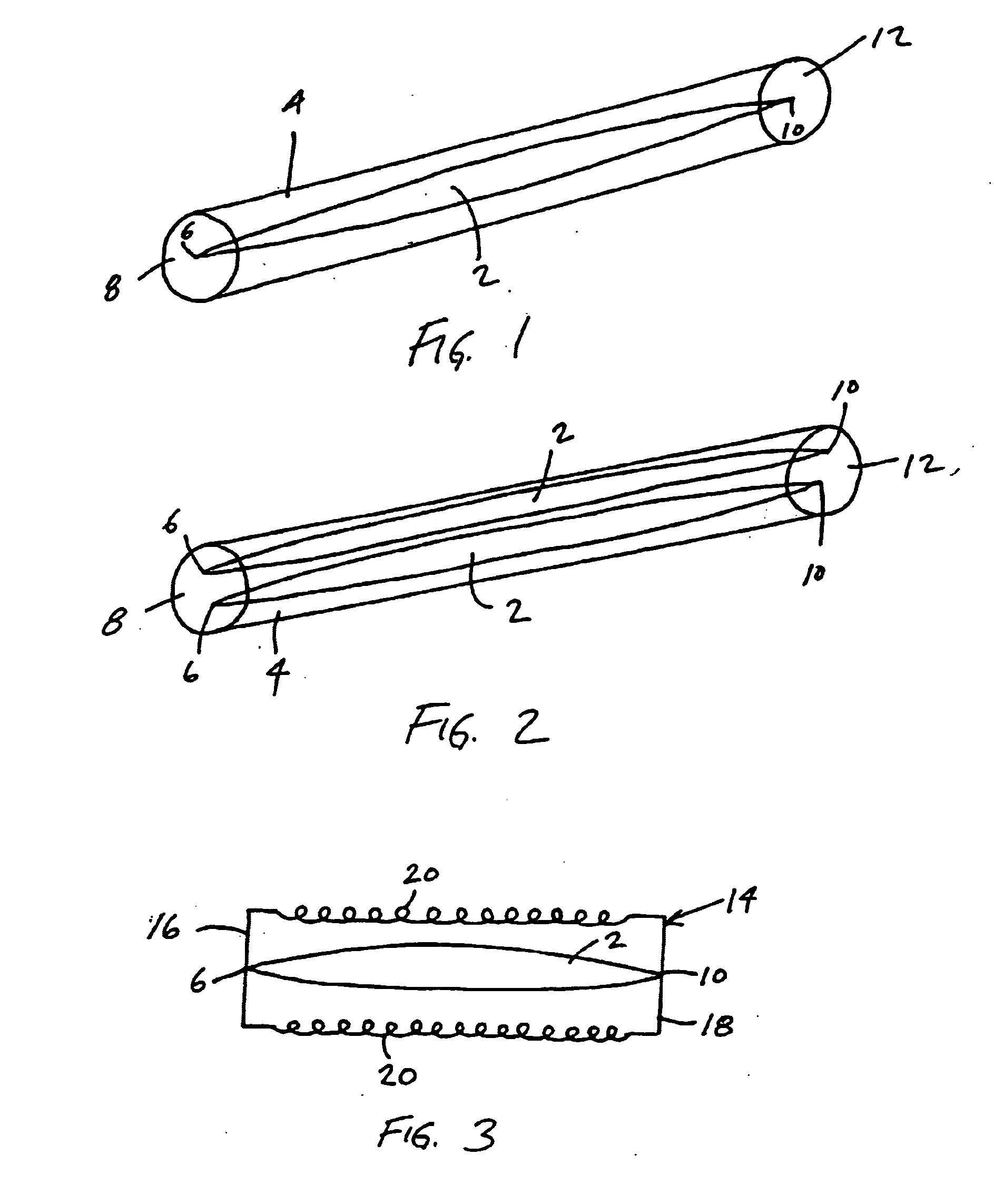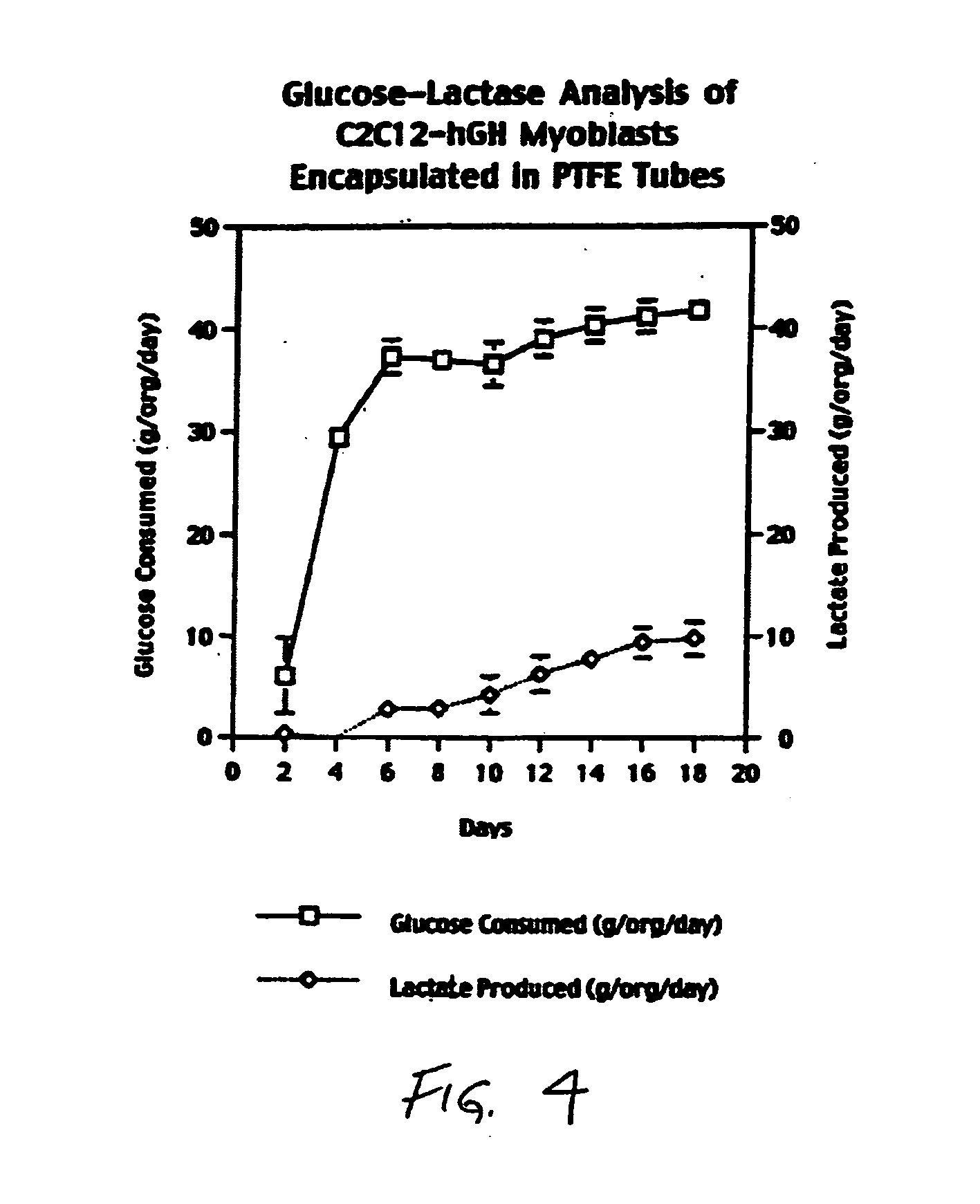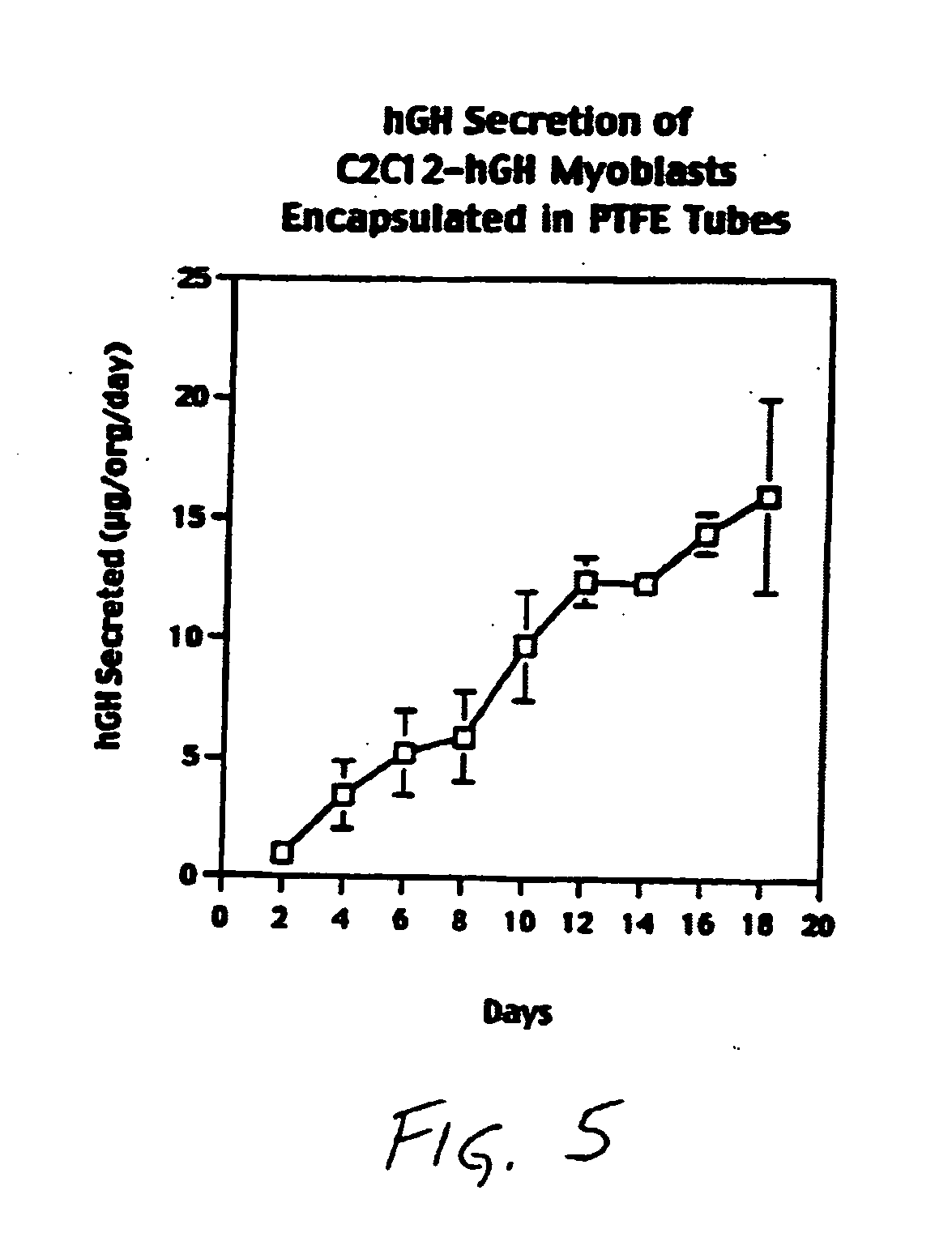Delivery of an organized tissue to an organism
a tissue and organ technology, applied in the direction of skeletal/connective tissue cells, biocide, genetic material ingredients, etc., can solve the problems of inability to maintain a tension-free sleeved organized tissue, inability to produce in vitro, and inability to sleeve an organized tissue constru
- Summary
- Abstract
- Description
- Claims
- Application Information
AI Technical Summary
Benefits of technology
Problems solved by technology
Method used
Image
Examples
example 1
[0098] An experiment was conducted to assess the long-term viability, GH output, and ultrastructure of C2C12 cells transfected with the hGH gene in a microporous, ePTFE tube. The experiment gave the unexpected results that organized tissue grown in a sleeve produced more protein than organized tissue grown in an open trough for the same overall number of cells.
[0099] Tube Construction: Tubes of ePTFE with a pore size of approximately 20 microns were cut into 3 cm segments. On one end of the tube, a stainless steel screw was inserted and loosely tied with 6-0 silk suture. On the other end, a gas-line screw, which has an open channel running from end to end, was inserted and loosely tied with 6-0 silk suture. Upon insertion of both screws, the total open volume within the tube was roughly 0.295 cm3.
[0100] Cell Suspension: C2C12 cells transfected with hGH were grown in Growth Media (20% serum) until confluence in a T-175 flask. The cells were trypsinized and counted. 5.1 million cell...
PUM
| Property | Measurement | Unit |
|---|---|---|
| pore size | aaaaa | aaaaa |
| pore size | aaaaa | aaaaa |
| pore size | aaaaa | aaaaa |
Abstract
Description
Claims
Application Information
 Login to View More
Login to View More - R&D
- Intellectual Property
- Life Sciences
- Materials
- Tech Scout
- Unparalleled Data Quality
- Higher Quality Content
- 60% Fewer Hallucinations
Browse by: Latest US Patents, China's latest patents, Technical Efficacy Thesaurus, Application Domain, Technology Topic, Popular Technical Reports.
© 2025 PatSnap. All rights reserved.Legal|Privacy policy|Modern Slavery Act Transparency Statement|Sitemap|About US| Contact US: help@patsnap.com



